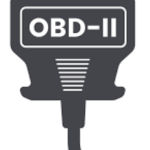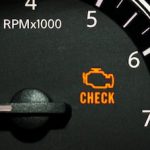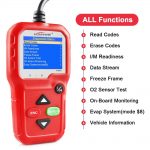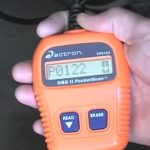The OBD-II troubleshooting codes on a car are a common problem with modern vehicles. This article will discuss some of the most common reasons for these codes and how to read them. There is a lot of information to learn about these codes and what they mean. You can also use these troubleshooting codes to pinpoint the source of your vehicle’s trouble. You can also try a few basic tests to determine if you need to replace any parts or just repair your vehicle.
OBD-II codes
If you are unfamiliar with OBD-II codes and don’t know what they mean, this article can help you. The codes may vary from car to car, and can be confusing if you don’t know what to look for. Fortunately, there are several resources online that can help you troubleshoot your car. Below, we’ve listed some of the most common car diagnostic codes.
The first digit of an OBD code tells you what kind of problem your car has. The Society of Automotive Engineers created a standardized system of codes to indicate most vehicle problems. These are called generic codes, but some manufacturers have also created their own codes. Generic codes are P0 and P2, while manufacturer-specific codes are B1 and C1.
You can also purchase an auto code reader to get the codes from your car. This device can be purchased at almost any auto parts store and comes with software to interpret them. Code readers are much less expensive than scanners and can be purchased from most auto parts stores. They are not nearly as effective, but can help you understand what codes mean. For more information, check the manufacturer’s website. You can also check online for specific car codes.
Troubleshooting OBD-II-codes for cars is an essential aspect of vehicle maintenance. A check engine light indicates a number of problems with the car. Some of these problems involve the fuel system, ignition, transmission, and computer circuitry. These errors can also affect emissions. Knowing what these codes mean will help you determine which part needs repairs the most. So, what is the best way to solve a car issue?
A car’s computer is a complex piece of equipment. To read the data stored in your car’s computer, you need special equipment. Fortunately, this equipment is now available for purchase. You can also buy a professional scan tool that can retrieve these codes. Once you have the codes, you can diagnose your car’s problem with a scan tool. But remember, a proper diagnostic tool will not only give you the information you need to fix the car, but will also give you the exact diagnosis you need.
If you’re unsure what to look for when troubleshooting OBD-II codes, remember that most of them are easy to diagnose. If you’re not confident enough, you can try some simple fixes. Some of these include changing the air intake or fuel intake. But the most common issue is a faulty oxygen sensor. Regardless of the reason, it’s important to determine what is causing your car’s code.
A diagnostic trouble code (DTC) is a series of five letters and numbers that your car’s on-board computer uses to diagnose problems. These codes are stored by your car’s on-board computer management system, and will give you a symptom. You can find these codes through the help of a manual published by the Society of Automotive Engineers. However, if you are not comfortable reading the code on your own, you can refer to the manufacturer’s manual.
Common suspects
There are three common suspects when troubleshooting codes for your car: the fuel system, EVAP, and the engine. A fuel system code is a signal that something is wrong, and it needs immediate attention. A critical code is an engine problem, and any problems with that system could have catastrophic consequences for your car, as well as the safety of you and your passengers. Most of these trouble codes begin with “P” or “C,” and refer to a critical system. Non-critical codes are not necessarily life-threatening, but they need immediate attention. They may refer to internal systems.
A P0300 DTC code indicates that the engine, transmission, or fuel system are malfunctioning. This code is usually triggered by a P0301-P0308 problem, but can also mean anything else. The P0300 code may be triggered in conjunction with another code, such as a P0308, and is the most common of all. For further information, check out the definition of a J1939 code, which is a four-character string. Each character signifies a particular system, which is why these are commonly the first suspects in troubleshooting car problems.
Identifying trouble codes can be challenging. While the most common culprit is the engine, many cars are capable of performing a wide variety of functions. Checking a P0246 code can help you identify the source of the problem. Some of these are common, and some of them may be very common. For instance, if a particular part of a car is showing a P0246 code, it’s probably due to a defective rubber hose.
P0171 is a common diagnostic code that indicates a problem with the oxygen sensor or air/fuel ratio. While it may not seem obvious, a P0171 code can make the car run rough or have a rough idle. There are several possible causes for this code, but an ASE-certified technician can diagnose the problem and decide the proper course of action. If your car has this code, it may be time to replace the catalytic converter.
How to read them
Fortunately, most new car owners don’t need a mechanic to fix their car. If you don’t understand these codes, you can easily find out what they mean and how to fix them. Fortunately, there are a number of resources available that can help you understand the meaning of trouble codes, including the Society of Automotive Engineers (SAE) manuals and online resources. You can also use a computer code retrieval tool to find out what your car is experiencing.
Most modern vehicles contain a computer that controls all aspects of their performance. This computer will send out trouble codes when a problem is detected, usually through the check engine light. These codes are usually five-digits long and will let you know which component is faulty. Once you’ve located the trouble code, you can then attempt to fix the problem. You can also use these codes to identify a specific fault or replace it with an alternative.
The problem with the DTC is described by a two-digit code (DTC). The DTC number can range from 0 to 99. Each character describes the specific problem with your car. For example, a P0219 code denotes a problem with the powertrain. The first letter of the code indicates the part of the car that is at fault. This code is usually associated with an issue that requires replacement of a specific component.
If you’re unsure of what your car is indicating, you can download and read the SAE manual. This manual contains information that will guide you in troubleshooting your car. There’s also a handy reference manual that shows you how to read troubleshooting codes for cars. So, the next time you need to diagnose a problem, you’ll know exactly what to do.
OBD or On-Board Diagnostics is a process in which the computer reads a series of trouble codes from your car. Each code represents a specific part of your car. These parts include air conditioning, air bags, anti-lock brakes, chassis, powertrain, and user network. However, it’s important to understand that OBD codes are not the same for every vehicle model.






